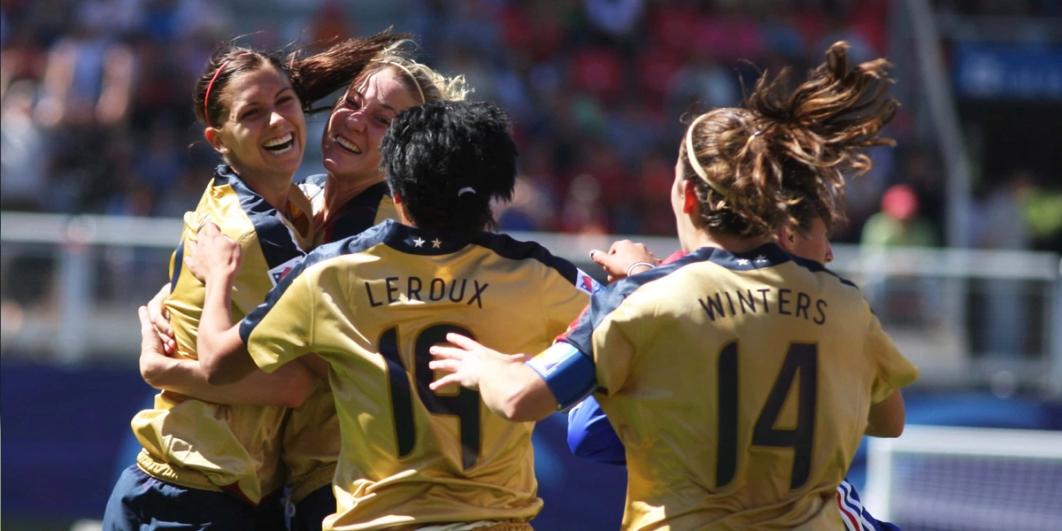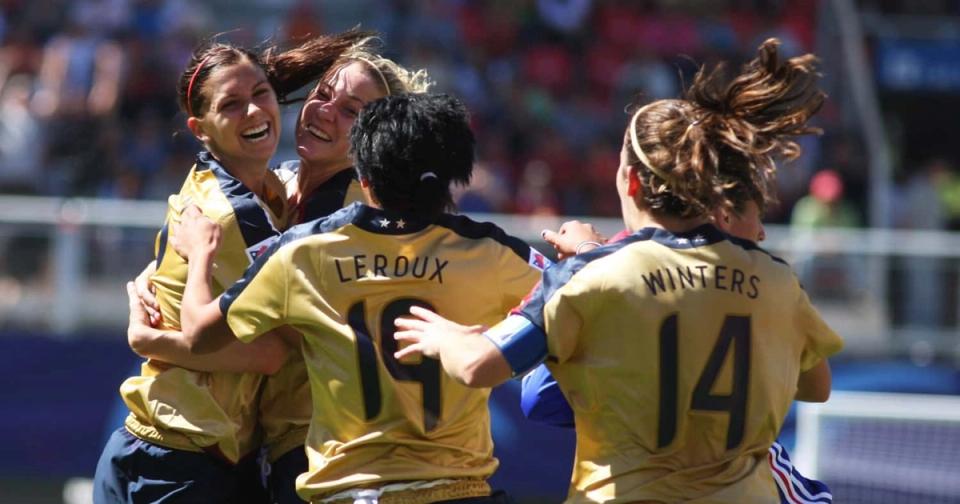With the U.S. Under-20 Women’s National Team heading into the stretch run for World Cup qualifying early next year when it comes together for a training camp at the U.S. Soccer National Training Center in Carson, Calif., it’s a good time to check in with some familiar names in women’s soccer who have unique insight into where these U-20 players are right now and where they could be in a few years.
Talk to any player who’s played in one, and she’ll tell you that the World Cup is just…different.
Sometimes it’s hard for players to verbalize why a World Cup game is so unlike a friendly or any other kind of tournament match, but it can be chalked up to this: everything is elevated.
The speed of play.
The level of competition.
The focus needed.
The short recovery.
The travel.
The number of fans in the stands.
The massive TV audience.
The scrutiny.
The media coverage.
The pressure.
The potential rewards.
In a FIFA Women’s World Cup, you basically play the most important game of your life. Then four or five days later, you play the new most important game of your life. If you’re fortunate, and if your team is talented, you get to do that seven times.
How does a young player prepare for that boiling cauldron of pressure and intensity? The best way to prepare for their turn on the world’s biggest stage, say many of the current U.S. Women’s National Team players, was playing in the FIFA Under-20 Women’s World Cup when they were teenagers.
Of the 23 players on the USA’s 2019 FIFA Women’s World Cup championship-winning team, 16 played in a FIFA U-20 Women’s World Cup and seven played on teams that won it. Of the USA’s starters in the World Cup Final victory against the Netherlands, 10 of the 11 had played in a World Cup at the U-20 level.
The veteran players can share their experiences with young players, but perhaps this is one of those times where you just have to be there.
“Playing in the U-20 World Cup was extremely important in my career,” said Alex Morgan, who scored the game-winning goal in the 2008 FIFA U-20 Women’s World Cup Final against North Korea. “Not only was I able to be seen in a World Cup environment by Pia Sundhage, the head coach at that time, but also in terms of development, it gave me the chance to compete at the highest level for my age group and it really helped prepare me for what was to come in the 2011 World Cup and for future Olympics and World Cups.”
Three years after that U-20 Final in Chile, Morgan scored in the Women’s World Cup Final in Germany and has gone on to score more than 100 goals for the senior National Team.
But as much as playing in a youth World Cup has helped these players, the two-year journey of preparation and through the qualifying tournament is just as valuable. The players ride the peaks and valleys that all elite athletes experience, realize – perhaps for the first time – that they just might not be best player on this team and must battle to stay consistently elite. They must fight to make the rosters and then put it all together over a three-week period to defeat the world’s best and bring home a trophy. It’s those experiences that steel players for potential success, fame and possibly fortune at the senior level.
“Playing for the U-20s was huge for my development as a player,” said Julie Ertz, who captained the USA to the 2012 FIFA U-20 Women’s World Cup title in Japan and won the Bronze Ball as the third-best player in the tournament, a rare feat for a central defender, which she was at the time. “The experience allowed me to gain confidence at a young age and get a glimpse of what it would take, on a smaller scale obviously, to be on the full team.”
Over the last few cycles, the U.S. U-20s have been competing at the World Cup against top teams whose players are almost exclusively in professional club environments in Europe or in Asia. That fact challenges and pushes the U.S. players to act like professionals before they get an actual paycheck. They need to learn how to think and train and recover like pros at highly-competitive National Team camps in which they are constantly competing for roster spots and starting spots with the country’s best players in their age group.
“Playing in and training for the U-20 World Cup was a tremendous growth experience for me,” said Andi Sullivan, who played in the 2016 FIFA U-20 Women’s World Cup, won a NCAA title at Stanford, won the Hermann Trophy as the nation’s top collegiate player and was the #1 pick in the 2017 NWSL Draft. “You learn a lot being at tournament at that level and going through all the factors that go into trying to make it as far as you can. A lot of the players on the full Women’s National Team have gone through that experience and there’s no doubt it helps them in their professionalism to this day. You have to learn how to manage games through a tournament, manage your own body, manage the tactics and gamesmanship. All those details are really highlighted in a World Cup tournament, so having that experience is extremely helpful to prepare you for the full team.”
The next FIFA U-20 Women’s World Cup – to be held in Nigeria -- will be the 10th world championship tournament contested at this age level. The USA has participated in the previous nine (the first two being held as U-19 tournaments) and has won it three times, finishing third once and fourth twice, while painfully exiting the tournament on penalty kicks three times. Should the USA qualify through the Concacaf tournament early next year, it’s likely that several future full team stars will be on display in Africa.
“To have that type of tournament experience – with the U-20 World Cup being run very similar to the senior World Cups – was super valuable,” added Ertz, a key player for the USA in the 2015 and 2019 Women’s World Cup title runs who admits to feeling fortunate to have won all three World Cups in which she has played so far. “Just learning how to go through a cycle taught me a lot, and I started to take it seriously that I could possibly make a career of playing soccer. I always dreamed of being on the WNT, but I don’t think it was real until after the U-20s. At that World Cup, competing against the best at my age, I could feel the opportunity ahead. It was an eye-opening experience to see where women’s soccer was going and where it could take me in my professional career.”
Winning and development work hand-in-hand on the Youth National Teams, and while both influence each other, the most important goal is helping players achieve their highest level possible. This past summer’s World Cup roster is proof that the U-20 program is helping do just that.
“I’m extremely thankful for my experience with the U-20s,” said Samantha Mewis, who played in three FIFA youth tournaments, one U-17 Women’s World Cup and two U-20 Women’s World Cups, winning her final one in 2012 along with 2019 Women’s World Cup players Ertz, Morgan Brian and Crystal Dunn as a special group of players rebounded from a loss in group play to Germany to defeat the Germans, 1-0, in the title game. “The structure of the tournament, the rhythm of games, the travel and the intense atmosphere were familiar to me in France because I had experienced something so similar before. The youth tournaments serve as super important platforms for players to experience, in many different ways, what it’s like to compete on the world stage.”
There’s another interesting and inspirational footnote on Mewis’ World Cup journey: She was a reserve in all three of her youth World Cups. In Lyon, France on July 7, 2019, in front of 57,900 fans in the stadium and a TV audience of 263 million around the world, Mewis started, played 90 minutes, and assisted on the game-clinching goal.

